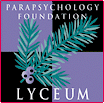 |
 |
| Books Tart, C. (1975). The Application of Learning Theory to ESP Performance. New York: Parapsychology Foundation, Inc. Tart, C. (1976/2001). Learning to Use Extrasensory Perception. Print-on-demand edition from Authors Guild back-in-print editions, http://www.iUniverse.com. (First publshed 1976) Tart, C. (1977/2001). Psi: Scientific Studies of the Psychic Realm. Print-on-demand edition from Authors Guild back-in-print editions, www.iUniverse.com, 2001. (First published 1977) Tart, C., Puthoff, H., & Targ, R. (Eds.) (1979/2002). Mind at Large: Institute of Electrical and Electronic Engineers Symposia on the Nature of Extrasensory Perceptiontributors) (2nd Rev Ed). Charlottesville, Virginia: Hampton Roads, 2002. (First published 1979) Tart, C. (Ed.) (1997). Body Mind and Spirit: Exploring the Parapsychology of Spirituality. Charlottesville, Virginia: Hampton Roads. Tart, C. (2009). The End of Materialism: How Evidence of the Paranormal is Bringing Science and Spirit Together. Oakland, California: New Harbinger. Articles Palmer, J., Bogart, D., Jones, S., & Tart, C. (1977). Scoring patterns in an ESP Ganzfeld experiment. Journal of the American Society for Psychical Research, 71, 121–145. Roll, W., & Tart, C. (1965). Exploratory ESP matching tests with a “sensitive.” Journal of the American Society for Psychical Research, 59, 226–236. Tart, C. (1963). Physiological correlates of psi cognition. International Journal of Parapsychology, 5, 375–386. Tart, C. (1965). Applications of instrumentation to the investigation of “haunting” and “poltergeist” cases. Journal of the American Society for Psychical Research, 59, 190–201. Tart, C. (1966). Models for explanation of extrasensory perception. International Journal of Neuropsychiatry, 2, 488–504. Tart, C. (1966). Card guessing tests: Learning paradigm or extinction paradigm. Journal of the American Society for Psychical Research, 60, 46–55. Tart, C. (1966). ESPATESTER: An automatic testing device for parapsychological research. Journal of the American Society for Psychical Research, 60, 256–269. Tart, C. (1967). A second psychophysiological study of out-of-the-body experiences in a gifted subject. International Journal of Parapsychology, 9, 251–258. Tart, C. (1968). A psychophysiological study of out-of-the-body experiences in a selected subject. Journal of the American Society for Psychical Research, 62, 3–27. Tart, C. (1972). Concerning the scientific study of the human aura. Journal of the Society for Psychical Research, 46, 1–21. Tart, C. (1974). Out-of-the-body experiences. In E. Mitchell, & J. White (Eds.), Psychic Exploration (pp. 349–374) New York: Putnam’s. Tart, C. (1977). Improving real-time ESP by suppressing the future: Trans-temporal inhibition. Proceedings of the IEEE Electro 77 Convention. Tart, C. (1977). Toward conscious control of psi through immediate feedback training: Some considerations of internal processes. Journal of the American Society for Psychical Research, 71, 375–408. Tart, C. (1978). Psi functioning and altered states of consciousness: A perspective. In B. Shapin & L. Coly (Eds.), Psi and States of Awareness (pp. 180–210). New York: Parapsychology Foundation. Tart, C. (1979). Improving real-time ESP by suppressing the future: Trans-temporal inhibition. In C. Tart, H. Puthoff, & R. Targ (Eds.), Mind at Large: Institute of Electrical and Electronic Engineers Symposia on the Nature of Extrasensory Perception (pp. 137–174). New York: Praeger. Tart, C. (1980). The possible nature of post-mortem states: A discussion, Part II. Journal of the American Society for Psychical Research, 74, 418–424. Tart, C. (1982). The controversy about psi: Two psychological theories. Journal of Parapsychology, 46, 313–320. Tart, C. (1984). Acknowledging and dealing with the fear of psi. Journal of the American Society for Psychical Research, 78, 133–143. Tart, C. (1986). Stopping on a hit: Preliminary studies of a method for producing positive experiences in the parapsychology laboratory. Journal of the American Society for Psychical Research, 80, 31–48. Tart, C. (1988). Effects of electrical shielding on GESP performance. Journal of the American Society for Psychical Research, 82, 129–146. Tart, C. (1988). Geomagnetic effects of GESP: Two studies. Journal of the American Society for Psychical Research, 82, 193–216. Tart, C. (1992). Perspectives on scientism, religion, and philosophy provided by parapsychology. Journal of Humanistic Psychology, 32(2), 70–100. Tart, C. (1998). Six studies of out-of-the-body experiences. Journal of Near-Death Studies, 17, 73–99. Tart, C. (2002). Parapsychology & transpersonal psychology: “Anomalies” to be explained away or spirit to manifest? Journal of Parapsychology, 66, 31–47. Tart, C. (2003). Spiritual motivations of parapsychologists? Empirical data. Journal of Parapsychology, 67, 181–184. Tart, C., Boisen, M., Lopez, M., Lopez, V., & Maddock, R. (1972). Some studies of psychokinesis with a spinning silver coin. Journal of the Society for Psychical Research, 46, 143–153. Tart, C., & Dronek, E. (1982). Mathematical inference strategies versus psi: Initial explorations with the Probabilistic Predictor Program. European Journal of Parapsychology, 4, 325–356. Tart, C., & LaBore, K. (1986). Attitudes toward strongly functioning psi: A preliminary study. Journal of the American Society for Psychical Research, 80, 163–173. Tart, C., Palmer, J. & Redington, D. (1979). Effects of immediate feedback on ESP performance over short time periods. Journal of the American Society for Psychical Research, 73, 291–301. Tart, C., & Smith, J. (1968). Two token object studies with Peter Hurkos. Journal of the American Society for Psychical Research, 62, 143–157. |
 |

|
 www. parapsychology. org |
||